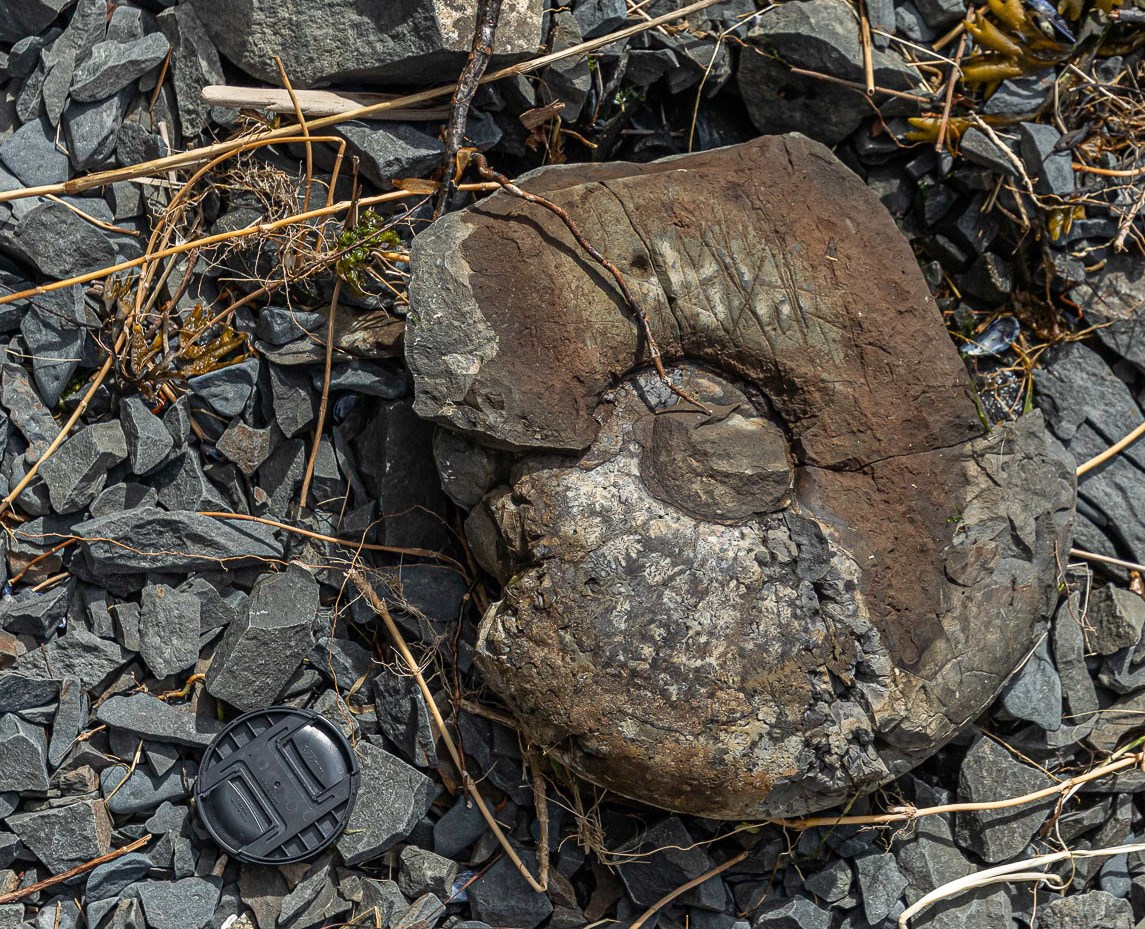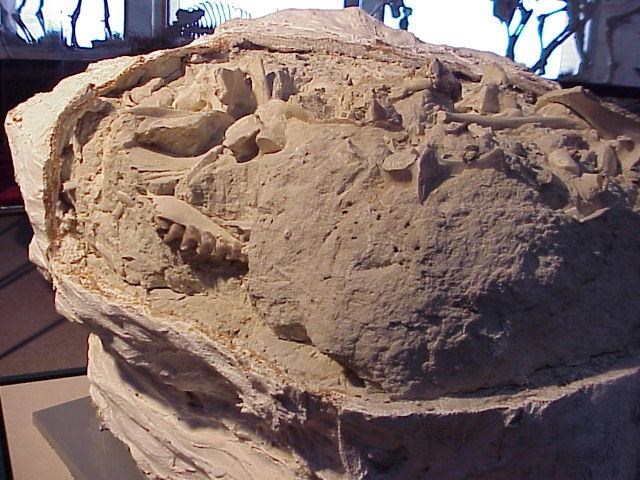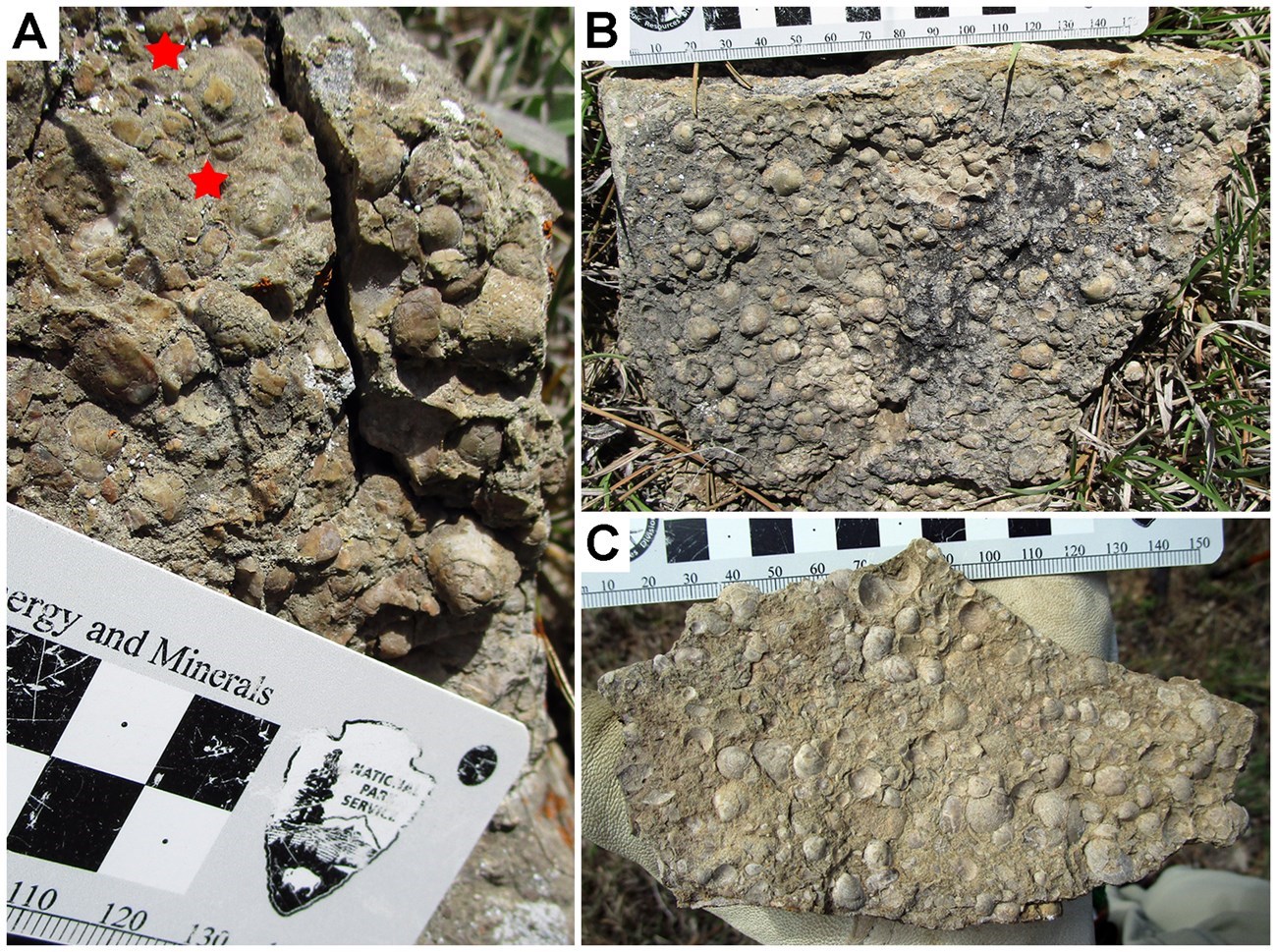Last updated: May 9, 2024
Article
Recrystallization

NPS photo by M. Harrington.
Introduction
Recrystallization is the fossilization process in which one mineral replaces another mineral of the same chemical composition.
It most often occurs between aragonite and calcite, two polymorphs (minerals with the same chemical composition but differing crystal structure) of calcium carbonate (CaCO3). Many invertebrates form their shells and other hard parts out of aragonite. The reason why invertebrates precipitate aragonite instead of calcite for their shells is not fully understood, but it may be because aragonite is harder than calcite, affording them better protection. During fossilization, calcite may replace the original aragonite. This replacement occurs because calcite is more stable than aragonite at or near Earth’s surface. The change can take place as soon as within a few thousand years, but can take longer. Many Cenozoic and Mesozoic invertebrate fossils have at least some aragonite, but it is very rare in older rocks.
In general, recrystallization may destroy some of the fine details in the fossil organism, particularly in invertebrate fossils.
Like other fossilization processes, recrystallization may take place in conjunction with other ones. For example, a bone fossil have undergone replacement, permineralization, and recrystallization.
National Park Examples
Agate Fossil Beds National Monument
The quarries in Agate Fossil Beds contain extensive bone beds of a variety of Miocene (23-22 million years old) mammals, including beardogs, tiny gazelle-camel, Menoceras (a small rhino), and, Daeodon, a large scavenger that looked superficially like a pig.The bones recovered from the quarries at Agate Fossil Beds have undergone several complex and interrelated fossilization processes. The hydroxyapatite (a calcium phosphate mineral) of living bone was replaced by fluorapatite (an apatite mineral with more fluorine), a process that must occur for bone to become fossilized as the collagen breaks down. Pore spaces in the bones were reduced by this process, but also by silica permineralization. Silica also replaced some of the other bone minerals in some fossils. In addition, the fluorapatite underwent dissolution and recrystallization. Overall, the bones from Agate Fossil Beds have greater mass, density, and hardness they did that in the mammals when they were alive.
Learn More

NPS photo.
Amistad National Recreation Area
Many of the invertebrate fossils in the Lower Cretaceous Salmon Peak Limestone exposed in Amistad National Recreation Area have been recrystallized. The Salmon Peak is a shelly lime mudstone that itself has undergone diagenetic recrystallization in places. (Diagenesis is the processes that occur after deposition as sediment is transformed into sedimentary rock.)
Learn More

Photos by Jack Johnson. Modified from Visaggi et al. (2009).
Devils Tower National Monument
Although Devils Tower itself is made of igneous rock, fossiliferous sedimentary rocks surround the prominent monolith. The Jurassic Sundance Formation was deposited under shallow marine and coastal conditions and contains abundant fossils of bivalves and belemnites in its marine beds. Like other invertebrate fossils of Jurassic age, they most likely have been recrystallized from aragonite to calcite.
Learn More

NPS photos by Justin Tweet.
Lake Clark National Park & Preserve
Fossil Point on the coast of Tuxedni Bay in Lake Clark National Park and Preserve is one of the richest invertebrate fossil localities in Alaska. The Middle Jurassic Tuxedni Group contains abundant ammonites, bivalves, and belemnites. Many of these fossils appear to have undergone recrystallization of aragonite to calcite, given their matte gray color.
Learn More
Featured Parks
-
Agate Fossil Beds National Monument (AGFO), Nebraska—[AGFO Geodiversity Atlas] [AGFO Park Home] [AGFO npshistory.com]
-
Amistad National Recreation Area (AMIS), Texas—[AMIS Geodiversity Atlas] [AMIS Park Home] [AMIS npshistory.com]
-
Devils Tower National Monument (DETO), Wyoming—[DETO Geodiversity Atlas] [DETO Park Home] [DETO npshistory.com]
-
Lake Clark National Park and Preserve (LACL), Alaska—[LACL Geodiversity Atlas] [LACL Park Home] [LACL npshistory.com]

